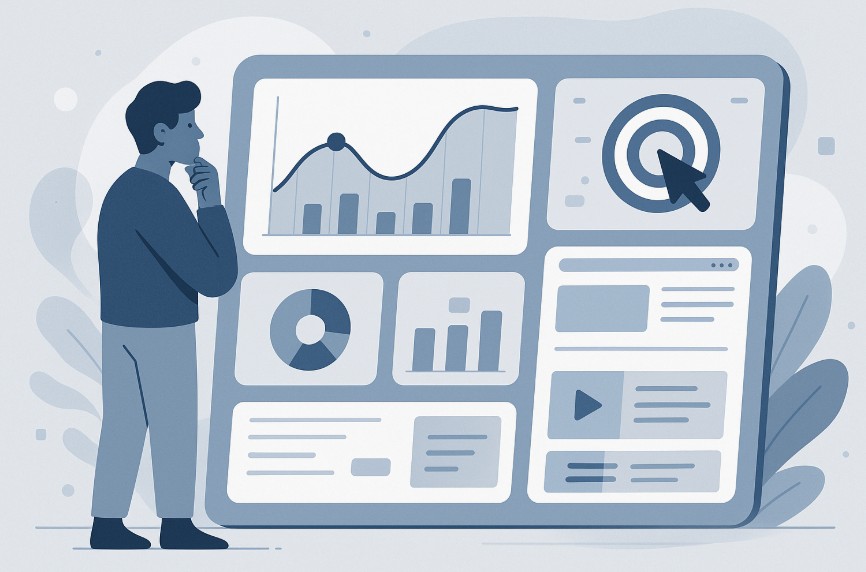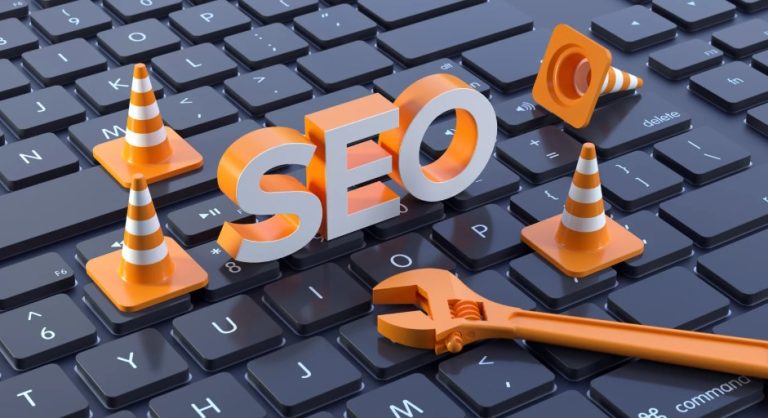Are you running PPC campaigns that generate clicks but fail to convert? Do you find your ad spend increasing while your leads remain stagnant? Are your visitors exiting the page almost as soon as they land? These are some of the most common frustrations digital advertisers face and often, the root cause lies not in the ad itself, but in the landing page it points to.
In today’s hyper-competitive PPC landscape, the landing page serves as the final bridge between curiosity and commitment. A well-optimised PPC landing page has the power to turn casual browsers into leads, subscribers, or paying customers. Without one, even the most perfectly crafted Google Ads campaign can fall flat.
This comprehensive 2025 guide walks you through the latest PPC landing page best practices, helping you build high-converting, purpose-driven pages that not only complement your paid ads but supercharge your overall return on investment.
Why Are PPC Landing Pages Crucial for Campaign Success?
A landing page acts as the destination for your PPC traffic. Unlike regular website pages, which often try to serve multiple purposes or audiences, PPC landing pages are built for one goal only to convert the visitor who clicked on your ad.
How They Impact Campaign Results?
When a user clicks on a paid ad, they do so with a specific intent. If they’re taken to a generic homepage or unrelated internal page, they’re more likely to bounce, wasting both their time and your budget. PPC landing pages ensure the content matches the ad’s promise, making it easier for the user to follow through with an action.
Moreover, Google evaluates the relevance of your landing page through its Quality Score, which influences both your ad placement and cost per click. A poor-quality page can lower your score, increase your CPC, and hurt your campaign’s overall profitability.
Top 5 PPC Landing Page Best Practices in 2025
Crafting a successful PPC landing page is both an art and a science. Here are the five most impactful best practices marketers must implement in 2025:
1. Align Your Message Across Ads, Headline, and CTA

One of the most overlooked yet critical aspects of PPC landing page success is message consistency. The user should experience continuity from the search query to the ad copy and finally to the landing page. This alignment builds trust and encourages users to take the next step confidently.
If your ad promises a “Free SEO Audit in Manchester”, your headline must restate that offer, and your CTA should directly guide them to claim it.
2. Keep the Design Focused and Clean

Design plays a pivotal role in directing user attention. Avoid cluttered layouts or excessive text that overwhelms the visitor. Use clearly defined sections, easy-to-read fonts, high-contrast buttons, and visual hierarchy to guide the user toward your goal.
Visuals should support, not distract from, the message. A strong hero image, product photos, or explainer graphics can boost engagement, but avoid including unnecessary animations or banners.
3. Make It Fully Mobile-Responsive

Mobile traffic accounts for over half of all search engine activity in the UK. Your landing page must offer a smooth experience on every device, especially smartphones.
Mobile-friendly PPC landing pages load quickly, resize dynamically, and have finger-friendly buttons. Ensure that no content is cut off and that forms are easy to complete without zooming or scrolling excessively.
4. Build Trust with Social Proof and Transparency

Trust is essential when asking users to part with information or money. Incorporate trust signals such as:
- Testimonials and customer reviews
- Trust badges (e.g., SSL secure, payment gateways)
- Ratings from third-party platforms like Trustpilot or Google
- Logos of recognised clients or partners
Also, include transparent policies around privacy and data use. For example, a short line under your form stating “We never share your details” can make a measurable difference.
5. Continuously Test and Optimise Performance

Every landing page, no matter how well-designed, benefits from testing. A/B testing enables you to compare different versions of headlines, button colours, form layouts, and imagery. Over time, these small improvements can significantly increase conversion rates.
CRO (Conversion Rate Optimisation) isn’t a one-time task, it’s a continual process that includes regular performance reviews using heatmaps, click tracking, and analytics data.
What Is the Difference Between Organic and Paid Search Landing Pages?
Understanding the distinction between these two types of landing pages will help you manage expectations and resources more efficiently.
| Feature | Organic Landing Page | Paid Search Landing Page |
| Purpose | SEO traffic generation | Conversion of PPC traffic |
| Traffic Source | Search engine rankings (free traffic) | Paid ads (Google Ads, Bing Ads, etc.) |
| Keyword Strategy | Broader range, long-term ranking | Highly targeted, campaign-specific |
| Page Longevity | Long-term, often evergreen | Short-term, flexible for A/B testing |
| Search Engine Indexing | Should be indexed | Should not be indexed |
| Design Focus | Informational and engaging | Conversion-focused |
“A well-structured PPC landing page does more than convert; it validates your brand promise in real time.”
– Fernando Raymond, CEO of ClickDo
Why Should You Use Dedicated Landing Pages for Google Ads?
A common mistake in paid advertising is sending Google Ads traffic to a generic homepage or service page. While this may seem convenient, it often undermines the effectiveness of the campaign. The solution? Dedicated landing pages, tailored specifically for individual campaigns or ad groups.
When a user clicks on a Google Ad, they expect to land on a page that answers their query or delivers the offer promised in the ad. A homepage, by nature, is designed to serve multiple purposes. It speaks broadly to various audience segments, lacks specific intent alignment, and often features multiple navigation paths, each of which increases the chances of a visitor abandoning the session before converting.
In contrast, a dedicated landing page is designed with a singular focus: convert the visitor based on their intent. This alignment between ad and page creates a seamless user experience and improves your campaign’s performance across several critical metrics.
Benefits of Dedicated Landing Pages
| Advantage | Description |
| Higher Relevance | Matches ad copy and user intent, improving experience and Quality Score |
| Improved Conversion Rates | Focused design and CTA reduce distractions and increase action likelihood |
| Better Tracking and Testing | Enables accurate A/B testing and performance insights with minimal interference |
| Lower Cost per Click (CPC) | Google rewards high relevance with lower CPC and better ad placement |
Creating a dedicated landing page for each campaign or key ad group gives you complete control over messaging, design, and structure which is essential for maximising return on ad spend (ROAS).
How Should Paid Search Landing Pages Be Structured and Optimised?
The structure of a paid search landing page should be intentional, intuitive, and user-focused. It’s not just about aesthetics, it’s about guiding the visitor logically from arrival to action.
The goal of the page is to remove friction. Every section, visual, and word should help the user answer a single question: “Why should I take this action?”
Essential Structure of a PPC Landing Page
| Section | Purpose |
| Headline | Confirm relevance to the ad clicked. Should echo the ad message clearly. |
| Subheadline | Add context or reinforce the value proposition introduced in the headline. |
| Hero Image or Video | Showcase the product or service in use, or visually support the offer. |
| Supporting Content | Explain the benefits clearly and concisely. Use paragraphs, not long lists. |
| Trust Signals | Include testimonials, reviews, badges, or certifications. |
| Call to Action (CTA) | Clearly visible button or form, repeated at least once throughout the page. |
The optimisation process involves ongoing refinement. You may start with a well-structured page, but user behaviour data such as heatmaps, scroll depth, and form abandonment should guide your updates.
Key Optimisation Focus Areas
- Page Speed: Landing pages should load in under 3 seconds. Use image compression and clean code.
- Mobile Responsiveness: Ensure the design adapts seamlessly to all device sizes.
- Form Design: Keep forms as short as possible. If necessary, use multi-step forms to reduce friction.
- CTA Placement: Place your main CTA above the fold and repeat it at logical intervals.
Landing pages should also be non-indexed in search engines to avoid SEO conflicts and irrelevant organic traffic that dilutes conversion tracking.
How Many Landing Pages Should You Have for Effective PPC Targeting?

There is no universal number, but one of the most powerful strategies in PPC is increasing landing page specificity.
Instead of relying on one or two generic pages, businesses should consider creating multiple landing pages tailored to different ad groups, audience segments, locations, or funnel stages. The more closely a landing page matches a user’s intent, the higher the likelihood of conversion.
Strategic Approach to Landing Page Creation
| Criteria | Example | Why it Works |
| By Product/Service | Separate pages for SEO, PPC, web design services | Allows focused messaging and benefit highlighting |
| By Audience Segment | Pages for SMEs, enterprise, startups | Tailors pain points and solutions to specific needs |
| By Location | Pages for Manchester, Birmingham, Liverpool | Improves local relevance and trust |
| By Funnel Stage | TOFU: Awareness, MOFU: Comparison, BOFU: Purchase-ready | Addresses different intent levels, from research to conversion |
| By Campaign Type | Brand awareness vs remarketing vs lead generation | Matches page structure to user readiness and urgency |
A business running multiple ad sets or targeting diverse audiences should aim for at least 5–10 tailored landing pages. High-growth brands often manage 15–30 or more, especially when scaling across locations and verticals.
Creating more landing pages doesn’t necessarily mean more complexity, modern tools and builders like Unbounce, Instapage, or Webflow allow for quick duplication and modification based on a working template.
Final Thoughts
In today’s data-driven, intent-focused marketing landscape, the PPC landing page plays a pivotal role in the success of your paid campaigns. It’s not simply a destination, it’s a conversion engine. When built with purpose, tested frequently, and aligned tightly with ad copy, a landing page can significantly lower your cost per acquisition and dramatically increase your return on ad spend.
As 2025 unfolds, user expectations are higher than ever. Generic, catch-all pages are no longer enough. Precision, speed, clarity, and trust are non-negotiable. The businesses that treat PPC landing pages as strategic assets, not afterthoughts and it will be the ones dominating their verticals in paid search.
Frequently Asked Questions (FAQs)
How important is the message match between ads and landing pages?
Extremely important. A strong message match reassures users they’ve landed in the right place and boosts conversion rates and Quality Scores.
What’s the ideal number of fields in a landing page form?
Keep it to 3–5 fields for most offers. Only request what is necessary to reduce friction and improve submission rates.
How frequently should I A/B test PPC landing pages?
Test continuously. Run A/B tests at least monthly or whenever you have enough traffic to generate statistically valid results.
Can one landing page work for multiple campaigns?
It’s possible, but not ideal. Tailoring landing pages to each campaign improves message relevance and conversion effectiveness.
Why shouldn’t PPC landing pages be indexed by search engines?
They’re built for paid traffic, not organic visibility. Indexing may lead to irrelevant traffic and poor user signals.
How do I know if my PPC landing page is underperforming?
Watch for high bounce rates, low time on page, poor conversion rates, or low Quality Scores in your Google Ads dashboard.









